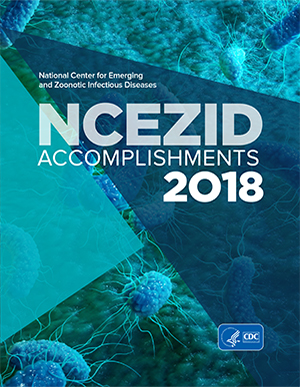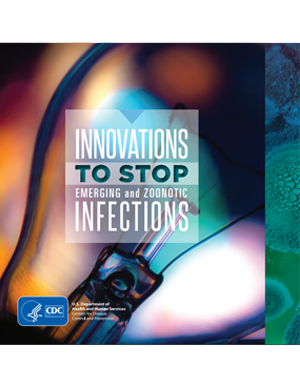NCEZID: Laboratory Expertise

NCEZID laboratories serve as vital reference laboratories for the United States and the world, aiding in critical disease detection, outbreak investigation, staff training, and public health research. In addition to managing the Laboratory Response Network, NCEZID provides oversight for a number of highly specialized laboratories.
NCEZID laboratories include:
- CDC’s Antibiotic Resistance Laboratory Network (AR Lab Network) supports nationwide lab capacity to rapidly detect AR and inform local responses to prevent spread and protect people. It closes the gap between local capabilities and the data needed to combat AR by providing comprehensive lab capacity and infrastructure for antibiotic-resistant germs; cutting-edge technology, like DNA sequencing; and data to drive response and prevent infections. The AR Lab Network includes labs in 50 states, five cities, and Puerto Rico, including seven regional labs and the National Tuberculosis Molecular Surveillance Center (National TB Center).
- The Infectious Disease Pathology Lab is the primary unit at CDC that tests and evaluates tissues from patients with infectious diseases of unknown origin; they investigate hundreds of cases each year.
- Viral special pathogens labs work with some of the world’s most dangerous viruses, which need to be handled at the highest biosafety level (BSL4) containment laboratory. Laboratorians also sometimes deploy to the field to investigate outbreaks of diseases such as Ebola and Marburg.
- Bacterial special pathogens labs work on anthrax and other potentially deadly bacteria. Experts from these labs work to train lab staff around the globe on the latest techniques for safely handling dangerous bacterial pathogens.
- Rickettsial zoonoses labs provide expertise in the diagnosis of diseases such as Rocky Mountain spotted fever and discovery of other tickborne disease pathogens. Tests developed by the labs have improved the speed and sensitivity of rickettsial pathogen detection.
- Enteric Diseases Laboratory Branch: PulseNet, NARMS, and National Reference Labs are critical in rapidly identifying foodborne pathogens, antimicrobial resistance, and helping control foodborne disease outbreaks.
- Healthcare-associated infection (HAIs) laboratories investigate causes of infectious illnesses in patients who receive health They also develop and share methods that partners can use for testing for specific pathogens causing HAIs.
- The Biotechnology Core Facility is a collection of six laboratories that use cutting-edge technologies like genomic sequencing to test for infectious and biothreat agents. It also evaluates emerging technologies for improving diagnostic tests as part of the Advanced Molecular Detection Program.
- The Mycotic Diseases Laboratory serves as a global reference laboratory, helping to detect new pathogens and emerging antifungal resistance. This laboratory also conducts applied research to detect disease-causing fungi in natural and healthcare environments.
- The WASH (Water, Sanitation, and Hygiene) Laboratories are the lead coordination and response unit for domestic and global WASH-related diseases. These four laboratories combine clinical and environmental testing to investigate waterborne disease outbreaks in the United States and abroad, and assist public health colleagues around the world in building their own lab capacity and expertise.
Some important work NCEZID laboratories have produced includes:
- Discovering and characterizing new infectious disease threats.
- Providing an early warning system for new or emerging viruses like chikungunya.
- Serve as a national reference capacity for monitoring AR in infectious pathogens, including carbapenem-resistant Enterobacteriaceae (CRE) in healthcare settings.
- Preparing reference materials (strains, cultures, and blood samples) that help confirm germs and providing quality assurance for other laboratories.
Conducting environmental investigations to solve large outbreaks and prevent new illnesses.
Stories on Laboratory Science
Accomplishments & Innovations
Find more information on accomplishments and innovations in Laboratory Science in these publications.


